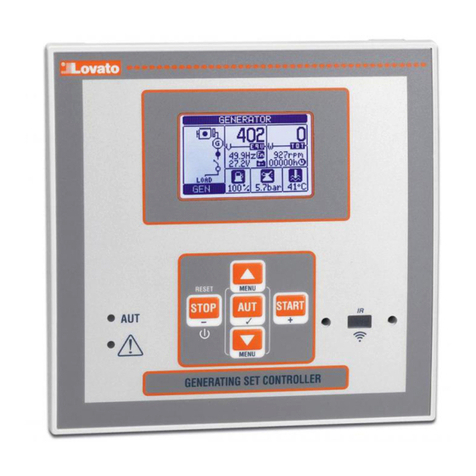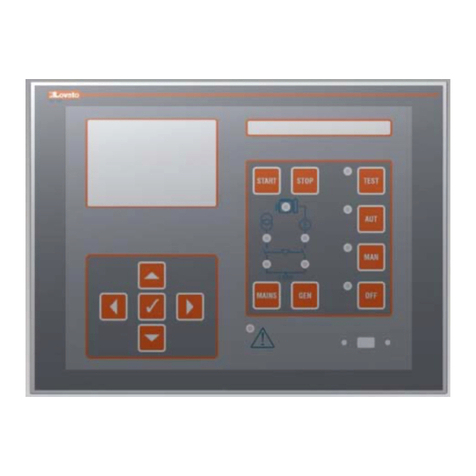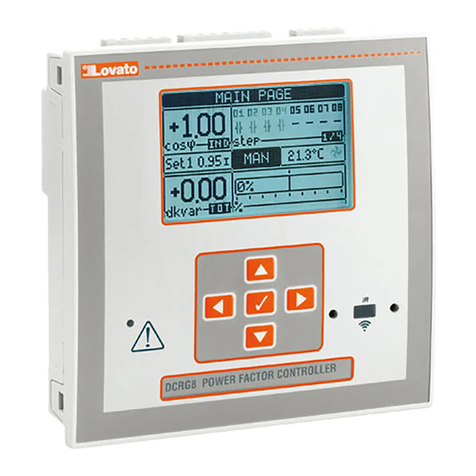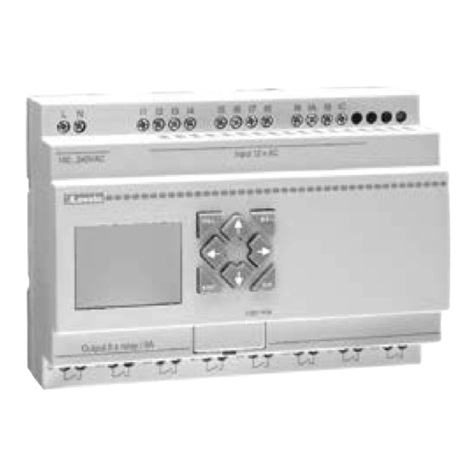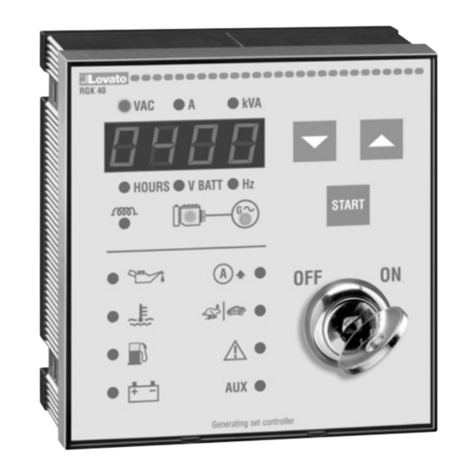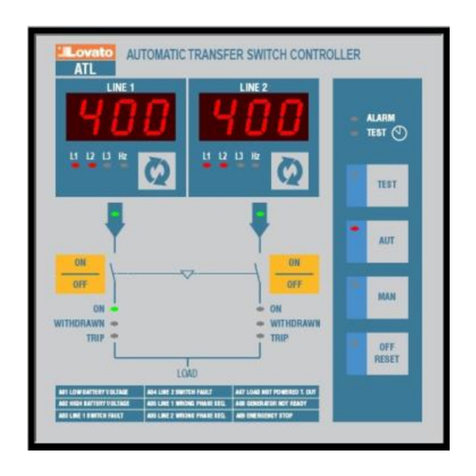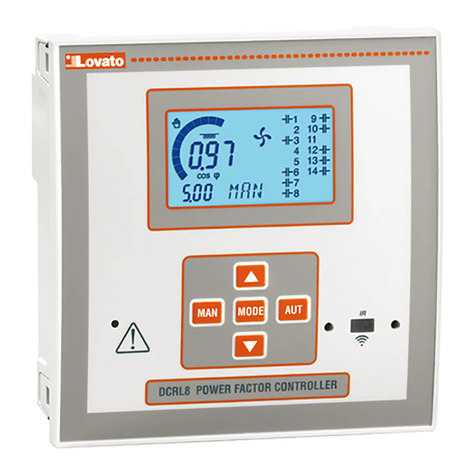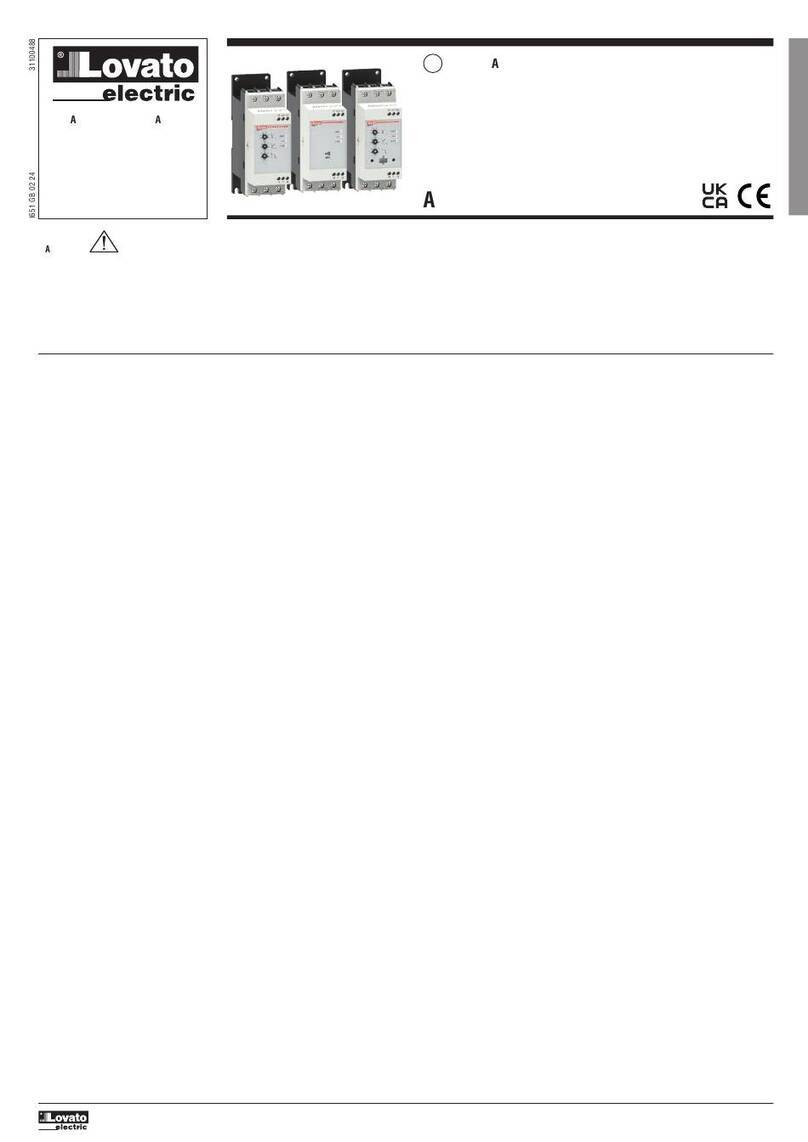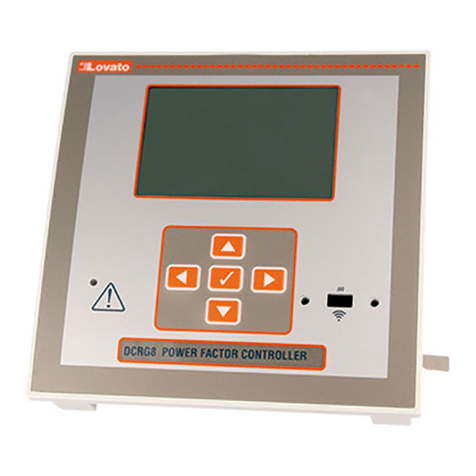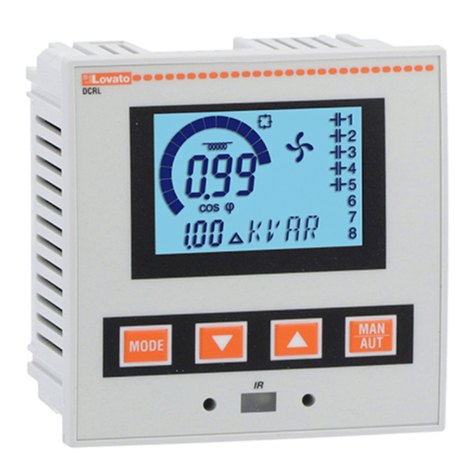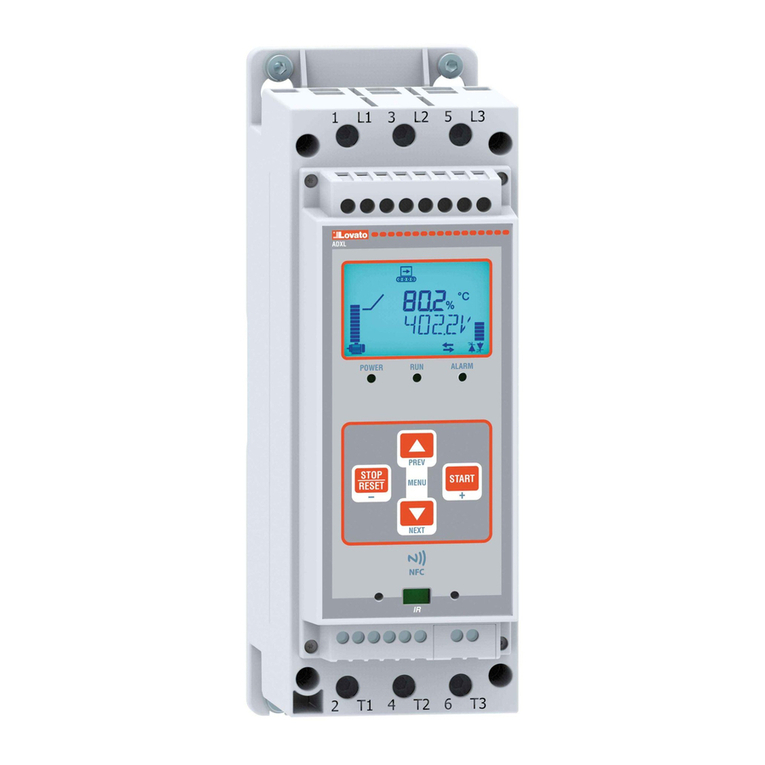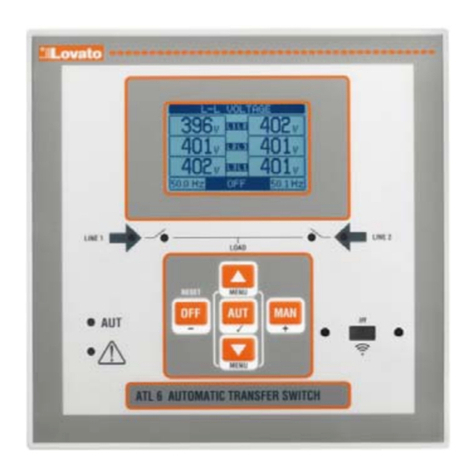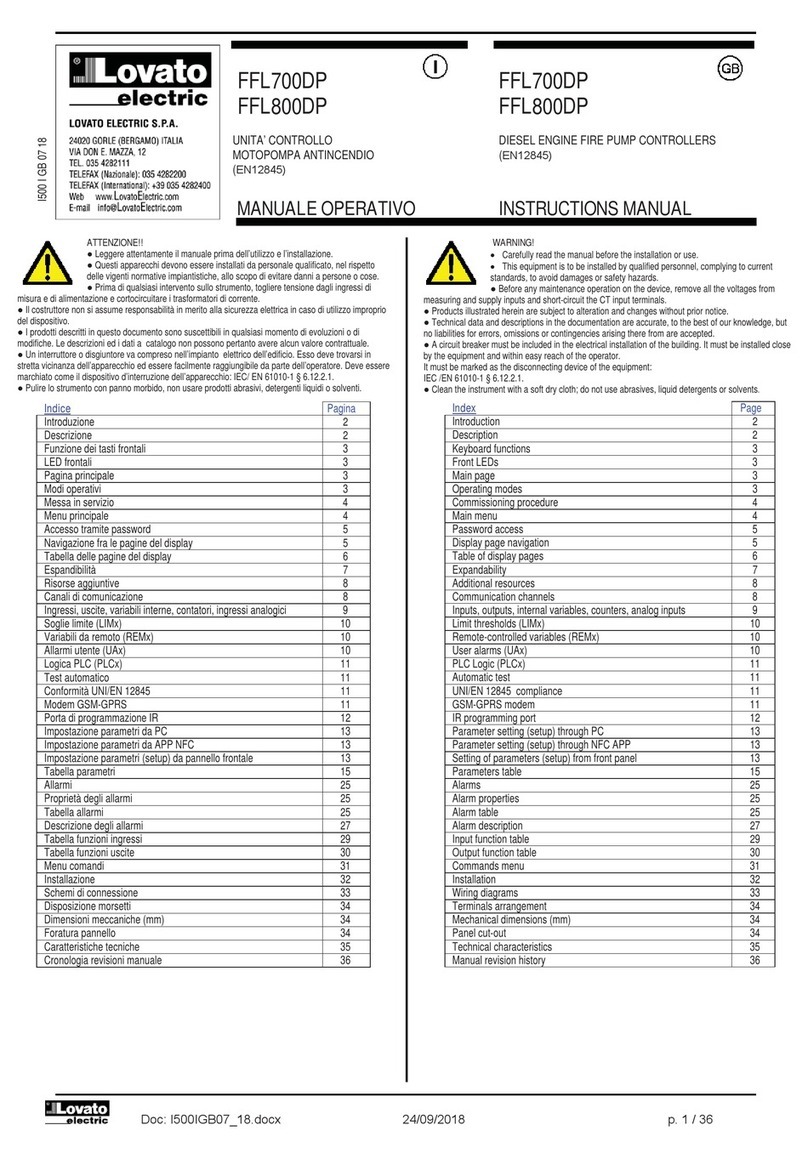
Doc: I500GBPL07_19 2020-02-03 p. 9 / 38
EXP 1042T 6 wejść 2
EXP 1043T 4 wej. + 2 wyj. 2
I/O ANALOGICI EXP 1004T 2 wej. analogowe 2
EXP 1040
2 wej. cyfrowe /
rezystancyjne i 2 wyj.
półprzewodnikowe
1
EXP 1042T 6 INPUTS 2
EXP 1043T 4 IN + 2 OUT 2
NALOG I/O EXP 1004T 2 INGRESSI ANALOGICI 2
EXP 1040 2 DIGITAL/RESISTIVE
INPUTS 2 STATIC OUTS 1
Kanały komunikacji
Sterownik FFL800DP umożliwia podłączenie 2 modułów komunikacji, oprócz
RS-485, oznaczonych jako COMn. Menu ustawieńkomunikacji jest podzielone
na trzy grupy (n=1 ... 3) parametrów dedykowanych do ustawieńportów
komunikacji.
Wbudowany port RS-485 oznaczony jest jako COM1, dlatego teżkolejne
oznaczone zostanąjako COM2 i COM3.
Kanały komunikacji sącałkowicie niezależne z punktu widzenia sprzętowego
i protokołów komunikacyjnych.
Dwa kanały komunikacji mogąbyćwykorzystywane w tym samym czasie.
Poprzez odpowiednie programowanie (patrz parametr P17.n.09) FFL może
działaćjako Modbus Master, zbierając informacje o innych urządzeniach
systemu przeciwpożarowego wyposażonego w RS485 w celu ich
koordynacji i wysyłania do systemu zdalnego sterowania alarmami.
Aktywacja funkcji bramki (Gateway) umożliwia stosowanie FFL800DP
z dwoma portami, Ethernet i RS-485. Sterownik pracuje jako pomost między
innymi sterownikami FFL wyposażonymi w port RS-485 i umożliwia bardziej
ekonomicznąkonfigurację(tylko 1 punkt dostępu do Ethernet).
W tej konfiguracji FFL800DP podłączony do Ethernetu będzie miałustawione
dwa kanały komunikacji (dwa spośród COM1, COM2 i COM3) z funkcjąbramki
(Gateway) ustawionąna ON, natomiast pozostałe FFL będące w sieci należy
ustawić: funkcja bramki (Gateway) = OFF.
Communication channels
The FFL800DP supports a maximum of 2 communication modules, indicated
as COMn, in addition to the built-in RS-485. The communication setup menu is
thus divided into three sections (n=1 … 3) of parameters for the setting of the
ports.
The built-in RS-485 interface on the controller is mapped as COM1, thus the
eventual additional channels will be called COM2 and COM3.
The communication channels are completely independent, both for the
hardware (physical interface) and for the communication protocol.
The channels can communicate at the same time.
With appropriate programming (see parameter P17.n.09), FFLs can act as a
Modbus Master, collecting information from other RS485 fire fighting equipment
to coordinate and send them to the alarm remoting system.
Activating the Gateway function, it is possible to use a FFL800DP with both an
Ethernet port and a RS485 port that acts as a bridge over other FFLs equipped
with RS-485 only, in order to achieve a more economic configuration (only one
Ethernet port).
In this network, the FFL800DP with Ethernet port will be set with both
communication channels (two among COM1, COM2 and COM3) with Gateway
function set to ON, while the other FFLs will be configured normally with
Gateway = OFF.
Wejścia, wyjścia, zmienne wewnętrzne, liczniki, wejścia analogowe
Wejścia i wyjścia sąidentyfikowane przez kod i numer kolejności.
Na przykład wejścia cyfrowe oznaczone kodem INPx, gdzie x odpowiada
numerowi wejścia. W ten sam sposób identyfikowane sąwyjścia OUTx.
Numer kolejności modułu jest opary o ich pozycjęmontażową, od góry do dołu.
Istnieje możliwość zarządzania 4 wejściami analogowymi (AINx) podłączonych
do analogowych czujników (temperatura, ciśnienie, przepływ itp.). Wartość
odczytana przez czujniki może byćwyskalowana w jakiejkolwiek jednostce
pomiaru, wizualizowana na ekranie i przesłana przez interfejs komunikacji.
Wartości odczytane przez wejścia analogowe wyświetlane sąna dedykowanej
stronie. Wartości te mogąbyćwykorzystywane do kontroli progów limitów
LIMx, które mogąbyćpowiązane z wewnętrznymi lub zewnętrznymi wyjściami
lub do wykonania funkcji logicznych PLC.
Numeracja modułów rozszerzeńwej./wyj. zaczyna sięod ostatniego
zamontowanego w jednostce bazowej. Na przykład z wejściami cyfrowymi
INP1…INP10 w jednostce bazowej kolejne wejście w module rozszerzeń
oznaczone będzie INP11.
Rezystancyjne wejścia analogowe mogąbyćrównieżużywane jako wejścia
cyfrowe, w tym przypadku przyjmująnumeracjęod INP23 do INP25.
Należy zapoznaćsięz poniższątabelą:
KOD OPIS BAZA EXP
INPx Wejścia cyfrowe 1…10 11…22
OUTx Wyjścia cyfrowe 1…11 12…20
COMx Porty komunikacji 1 2…3
AINx Wejścia analogowe - 1…4
RALx Zdalne przekaź. alarmów/statusu - 1…14
W podobny sposób można przypisaćkilka zmiennych wewnętrznych (markery)
do wyjść lub powiązaćmiędzy sobą. Na przykład istnieje możliwość
przypisania progów limitów do pomiarów dokonywanych przez system
(napięcie, prąd, moc, itp.). W takim przypadku wewnętrzna zmienna nazywana
LIMx, będzie aktywowana kiedy pomiary przekrocząlimity zdefiniowane przez
użytkownika w dedykowanym menu ustawień.
Dodatkowo mamy do dyspozycji 8 liczników (CNT1…CNT8), które mogą
zliczaćimpulsy pochodzące z zewnętrznego źródła (przez wejścia INPx) lub
ilość razy, gdy pewne warunki miały miejsce. Na przykład definiując próg limitu
LIMx jako źródło zliczania, możliwe jest zliczanie ile razy jeden pomiar
Inputs, outputs, internal variables, counters, analog inputs
The inputs and outputs are identified by a code and a sequence number. For
instance, the digital inputs are identified by code INPx, where x is the number
of the input. In the same way, digital outputs are identified by code OUTx.
The sequence number of I/Os is simply based on their mounting position, with
a progressive numbering from top to bottom.
It is possible to manage up to 4 analog inputs (AINx), connected to external
analog sensors (temperature, pressure, flow etc). The value read from the
sensors can be scaled to any unit of measure, visualized on the display and
transmitted on the communication bus. The value read from analog inputs is
shown on the dedicated display page. They can be used to drive LIMx limit
thresholds, which can be linked to an internal or external output, or used in a
PLC logic function.
The expansion I/O numbering starts from the last I/O installed on the controller.
For example, with INP1…INP10 digital inputs on the controller, the first digital
input on the expansion modules will be INP11.
The analog resistive inputs can be used as digital inputs. In this case they
assume the numbering from INP23 to INP25.
See the following table for the I/O numbering:
COD DESCRIZIONE BASE EXP
INPx Digital Inputs 1…10 11…22
OUTx Digital Outputs 1…11 12…20
COMx Communication ports 1 2…3
AINx Analog Inputs - 1…4
RALx Remote relays for Alarm / status - 1…14
In a similar way, there are some internal bit-variables (markers) that can be
associated to the outputs or combined between them. For instance, it is
possible to apply some limit thresholds to the measurements done by the
system (voltage, current, power, etc.). In this case, an internal variable named
LIMx will be activated when the measurements will go outside the limits defined
by the user through the dedicated setting menu.
Furthermore, there are up to 8 counters (CNT1...CNT8) that can count pulses
coming from an external source (through a digital input INPx) or the number of
times that a certain condition as been verified. For instance, defining a limit
threshold LIMx as the count source, it will be possible to count how many times
